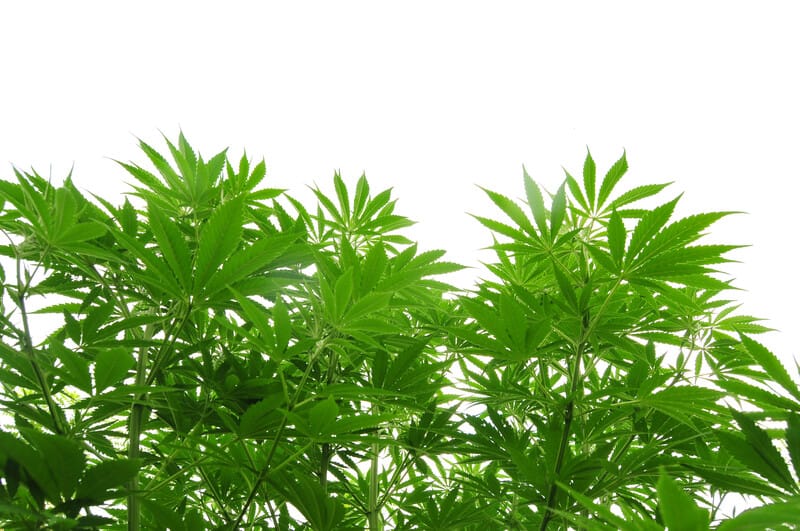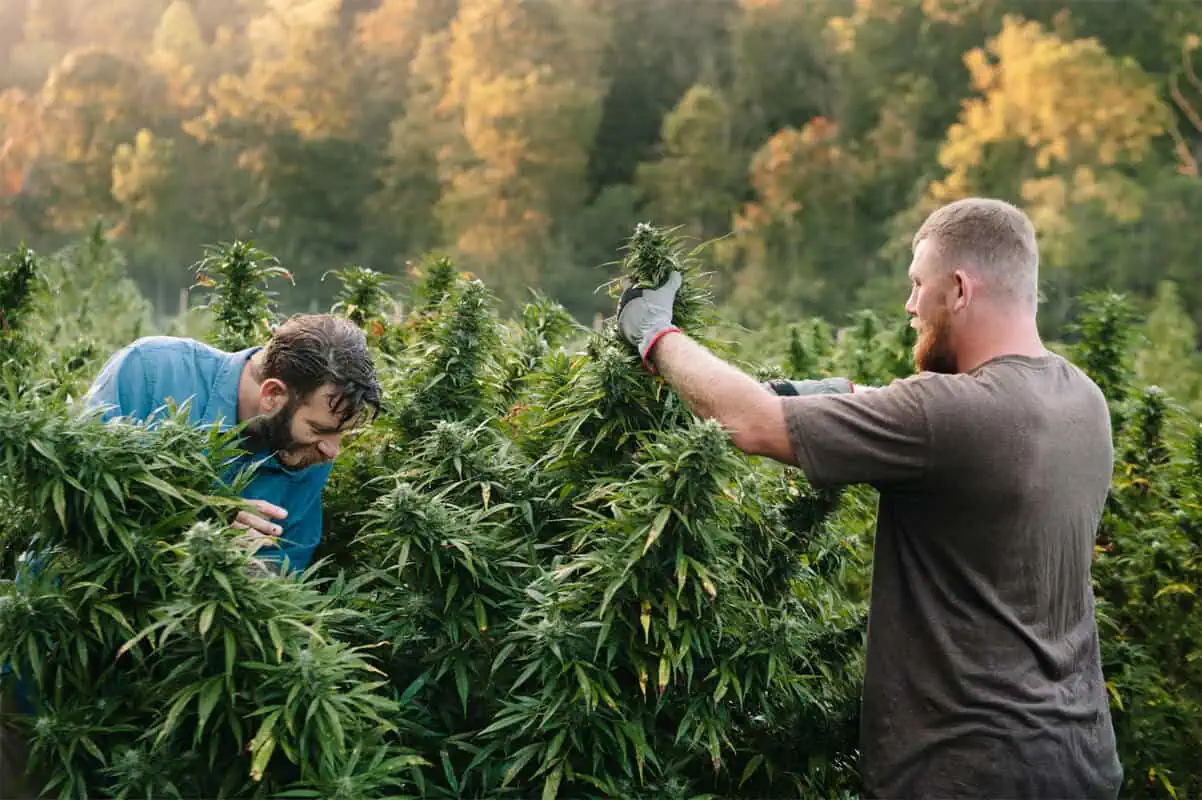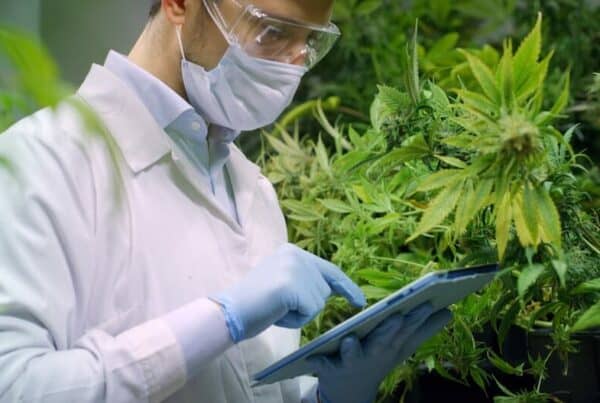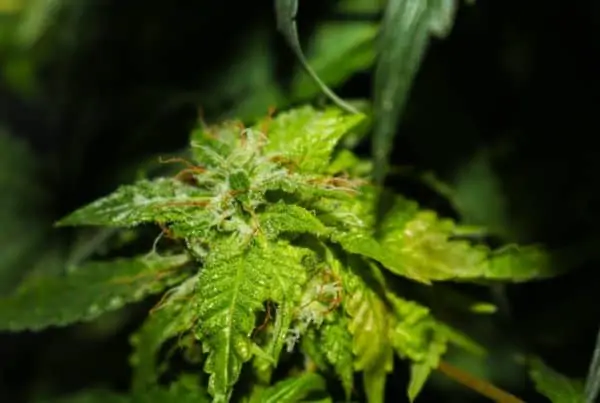TABLE OF CONTENTS
Has marijuana gotten stronger? The primary psychoactive element in marijuana, THC, in 1975, had an average potency of less than one percent, and in 1985, it increased to three percent. In today’s cannabis market, marijuana’s THC levels range from 15 to 25 percent, not to mention cannabis concentrates like THCA isolates that can reach up to 99.9% potency.
Has Marijuana Gotten Stronger?
Cannabis potency depends on the concentration of delta-9 tetrahydrocannabinol (THC), the main compound responsible for the drug’s “high.” A 2016 study on cannabis products seized by the U.S. Drug Enforcement Administration found that the potency of cannabis strains rose from about 4 percent in 1995 to about 12 percent in 2014.
A 2019 study found that the potency of black market cannabis had increased to 17.1% THC. That means that from 1995 to 2017, THC potency in illicit cannabis samples increased more than 300 percent. In addition, cannabis extraction technologies have made it easier to create hash oil that has up to 99% THC.
Cannabis subculture exploded in the 1970s with landrace strains like Colombian Gold and Thai Sticks. However, these strains had a darker color, more leaves and stems, and thinner structures, not like the dense and resinous buds you will find today in dispensaries.
Is Higher THC Potency a Good or Bad Thing?
Higher THC potencies have made it possible for some medical users to experience the significant relief they need from severe medical conditions and symptoms. However, THC has been associated with adverse effects, including increased heart rate, dry mouth, red eyes. memory loss, anxiety, delayed reaction times, and coordination issues.
While cannabis is generally a safe drug, the effects of THC can be dependent on the dose level. For example, a low dose of THC can help those with anxiety relax and feel euphoric. However, high concentrations of THC can cause increased anxiety, paranoia, and panic attacks.
THC has a similar dose-dependent effect on the cardiovascular system. Taking low doses of THC can increase blood flow, while high THC concentrations can decrease the blood flow through the vessels.
So, is stronger marijuana a good or bad thing? Unfortunately, there is no straightforward answer to this.
Cannabis affects everyone differently. However, we do know that young adults are more susceptible to the adverse effects of THC since their brains are not fully mature and early cannabis use can negatively affect cognition and behavior.
Cannabis Cultivation Focuses on High THC Bud
In the past decade, more marijuana growers have decided to grow weed indoors. If you grow weed outdoors, you can always move the plants indoors, controlling where they are being harvested and optimizing their environment for improved bud and resin quality. Essentially, growing practices have improved leading to higher potency cannabis.
Cannabis growers have implemented strategic cultivation methods for a better harvest. This includes trimming fan leaves and removing lower plant shoots (lollipopping) so energy can be diverted to the top of the marijuana plant where the bigger buds are instead. Growers have also learned how to time their harvests to get the highest THC potency possible. These cultivation methods are highly effective for increasing marijuana potency.
Over the years, cannabis growers have focused on growing sinsemilla, a female cannabis variety that has a high concentration of THC and no seeds to prevent pollination. Breeders have also invented feminized seeds, designed to only produce female plants, not male pollinating cannabis plants. In addition, growers have favored strains with the highest THC percentage creating hybrids with increasingly higher THC levels.
Overcoming the Challenges of Cannabis Prohibition
Federal cannabis laws are not in line with cannabis legalization, even when it has been approved by some states for medical purposes.
Due to its federal prohibition, some breeders have aimed for higher marijuana potency strains to more easily hide weed from federal authorities. If people can use a smaller amount of weed to get high, growers do not have to harvest huge amounts of cannabis that can attract the eyes of law enforcement.
If cannabis users are using less weed with higher potencies, there is less weed to sell and transport as well as to grow and harvest. If you were to review history, you would see that is what was done to hard liquor as it grew in popularity over the years of prohibition. So, the conclusion is that high marijuana potency in smaller quantities made it easier to hide from prying eyes.
Building a Tolerance to THC
Not everyone has the same tolerance to THC. Some users may only need a small dose of THC to find relief for their anxiety, while another user may require a stronger dose to relieve their chronic pain.
In addition, users can build a tolerance to THC over time, requiring increasingly higher levels of THC to achieve the desired effect. As THC potencies have increased over time, users have increased their tolerance for the THC, which can increase the amount used and money spent in the long run.
Interested in lowering your THC tolerance? Check out our guide on resetting your THC tolerance.
Safe Cannabis Consumption Practices
Cannabis, whether used medically or recreationally, can have numerous health benefits, but only if used in moderation. First-time users are encouraged to avoid high-THC products and use sporadically to reduce the risk of overconsumption or increased tolerance to THC.
Furthermore, users should only buy cannabis products that have been tested for potency and purity by a third-party laboratory. Black market cannabis is not tested for pesticides, heavy metals, and residual solvents. Finally, it is important to start with the lowest dose possible and slowly increase the dosage over time to achieve your desired effects.
“
There are over 300,000 jobs in the cannabis industry. CTU trained me for one of them!

Makes $24.50 @ THC +
Full- Spectrum Cannabis is the Future
While consumers have historically shopped for the highest potency possible, research on “the entourage effect” suggests that cannabinoids like THC and CBD aren’t the only compounds that matter. Cannabis contains a wide range of chemical components, including terpenes and flavonoids, which have been shown to offer numerous therapeutic benefits.
Full-spectrum cannabis products contain the plant’s entire range of beneficial compounds, including THC and CBD. As an alternative, broad-spectrum cannabis products contain terpenes, flavonoids, and all cannabinoids except for THC, making it perfect for those who want the full benefits of cannabis without the “high.”
Become a Master of Cannabis with Affordable Online Training
The cannabis industry is growing fast. Don’t get left behind. Enroll in the world’s most renowned online industry training program for students of all skill levels. Whether you want to learn how to increase your bud potency and grow yield or how to start your own cannabis business, CTU can help! Learn more about marijuana potency and how its chemical compounds interact with the body by enrolling in one of our cannabis courses.

Luis Cordova
Luis Cordova is a distinguished author, and renowned expert in cannabis cultivation, who possesses a Master's degree in Plant Biotechnology and Pharmaceutical Science. As a valued contributor to highly esteemed publications such as Cannabis Training University and Maximum Yield Magazine, Luis has emerged as a trusted source of guidance and knowledge in the cannabis industry. Having written thousands of informative articles, Luis is widely recognized for his comprehensive expertise on cultivating cannabis, both indoors and outdoors.












 Jeff was involved in an accident where he endured a traumatic brain injury. He had a week-long stay in ICU where brain surgeons
Jeff was involved in an accident where he endured a traumatic brain injury. He had a week-long stay in ICU where brain surgeons  100% risk free money back guarantee within 48 hours after purchase if student has not completed any of the courses or exams.
100% risk free money back guarantee within 48 hours after purchase if student has not completed any of the courses or exams.